Entertainment, Flag Waving and False Patriotism: Bikernet’s “Telling it how it is” Report
By Bandit |



.jpg)
The biggest enemy of the Constitution is apathy!

As I see it, we have inherited the rights we hold so sacred, without having had to fight for them. Does that make it easier to overlook asserting our rights when there is the prospect of doing something pleasurable? I think Thomas Paine described this very eloquently in December 1776 when he wrote these words in The Crisis: “Tyranny, like hell, is not easily conquered; yet we have this consolation with us, that the harder the conflict, the more glorious the triumph. What we obtain too cheap, we esteem too lightly.”
Unless we stand together, speak out and refuse to submit to illegal transgressions of our rights, we will lose even more of them. In the above referenced instance, I cannot blame the Navy or Harbor Park for presumably issuing a request to leave weapons at home. The blame falls squarely on the shoulders of the Rolling Thunder chapter leadership and the riders who blindly followed a request to participate in the disintegration of personal rights while others around the country are fighting to end this sort of discrimination.
ESCAPE TO THE COLORADO MOTORCYCLE EXPO
By Bandit |
Nothing better than old friends to help the winter disappear. When January closes out and the weather forces everyone inside, bikers look for any excuse to get out and party. The Colorado Motorcycle Expo is a terrific excuse. Like clockwork the CME is held the last weekend of January at the National Western Stock-show Complex.
For two days the facility is filled with steel horses, leather and chrome. Touted as the largest indoor motorcycle swap meet in the nation, it met the challenge. With approximately 200,000 square foot of space and 800 vendor spaces, all of them full, with action and bling.

Everyone has a specific reason for peeling to a swap meet. Small/Independent shops attend to make some money, and hold themselves over till riding weather and business picks up. Big shops need to get their names out and generate active leads. It will be bike-buying season soon. Builders bring their latest bikes to show off and hope to earn some bragging rights by taking home a trophy.
Shade tree mechanics scour the aisles for that special brand new innovation, or inspirational antique they need to launch their project closer to completion. Riders go to see old friends and make new ones. MCs meet for their winter get together and to maybe find a new prospect or two. Me, well I go for all of the above and to capture the essence of the event and bring it to you. Whatever your reason, the CME is a great show.
This year I meet up with some great vendors and quizzed them about their experience. My old friend Johnnie from J10 Leathers couldn’t keep his display full. Every time I stopped by he had a handful of customers looking at his biker wallets and other fine leather work. He said it was a great show, and thanks to the great attendance he will be back. I couldn’t even get close enough to his table to grab a photo.
Arlin and Donna Fatland of 2-Wheelers kicked off their 45th anniversary at the show. Old friends of Bikernet we wished them the best and congratulated them on achieving such an amazing milestone. They were working the crowd and visiting with everyone who came by their booth. Arlin has rolled with the custom world through thick and thin. Donna and Arlin also have shops in Daytona during Bike Week and on Main in Sturgis during the rally. Their shops are full of quirkiest shit on the planet. You can’t miss them.
Diesel Life and Greasy Bikers were on hand selling their sweet t-shirts and accessories. Both gave the same reviews as J10. Diesel Life even made some contacts for getting her line into some local stores. When your a start up company every little bit helps.
Wicked Influence sold their excess parts and Frank had a constant massive smile on his face. When I asked how he was doing he said, “Bills are paid in full for the month!” You can’t beat that.

Almost anything you could want in the way of motorcycle parts or accessories could be found. This is what a swap meet should be like. Watching one vendor, I caught him opening new tour-pak boxes and displaying them on his table. In a few minutes they were sold and he unwrapped some more. Chatting with him later he said he had to send his wife home to load more tour-paks. He sold out. That’s the perfect problem to have.
As the day rolled on the crowds stayed strong. At one time I even had trouble walking through the isles. But at about 3:30 the crowds thinned out as everyone made a b-line for the stadium. Jack Portice was on the loud speaker calling all able body bikers to come and enjoy the wet t-shirt contest. After its hiatuses for a year, it was back by popular demand. This year the girls did not disappoint.

Wherever you may live I am sure sometime during the year you will face a local swap meet. It may not be as big as the CME, but it’s always good time. Grab some buddies and go. If you can make it to Colorado at the end of January come down to the stock-show complex and join in some of the fun.


Eulogy for Dale Sheppard
By Bandit |
Dale Shepard died recently (November 16th). His passing was unexpected.
For those unfortunate enough not to have known him, Dale was the man who owned Biker Dale’s Bike Shop in Groves Texas where I replaced Betsy’s engine only weeks ago.
It was at the Galveston Motorcycle Rally last weekend that Dale ate two bad oysters. For whatever reason, these caused an infection in his blood that somehow complicated an already existing medical condition. It was one of those times when something that should not have killed a man did. I’ve seen this before. I have also seen men survive things that should have killed them 10 times over. Go figure. Some say that when your number’s up, it’s just up and nothing can change it. So it would seem.
When a man dies those who knew him often get to saying a lot of nice things—even if the guy was a complete asshole. I have no intentions of doing that here and will only talk about the man as I did when he was still alive.
Until the end Dale dedicated his life to the motorcycle. Although grumpy at times, he had one of the biggest hearts of anyone I’ve known. He was a biker through and through. He was my friend.
It was a sunny day the first time I met Dale. After being turned away at two other shops, I’d pulled into his yard with my clutch problem to ask if it’d be okay to pull my bike apart in his lot. Of course I’d buy any needed parts from him. I also secretly hoped to barrow any special tools I might need, and maybe get a little technical advice too. I was on the road with a mechanical problem, not too much money (as usual), and nowhere else to turn. So I looked hopefully at this stranger as he said, “Let me ride it.”. This seemed an unusual request but, with little choice anyway, I said, “It’s not locked.”
When evening came and Betsy was still on that rack (where she’d remain for an entire month), Dale offered me the shop’s back room or “guard shack” to stay in. For transportation Dale gave me one of his own bikes and often loaned me the shop truck. To date no one had been able to diagnose my clutch problem, but Dale determined it was inside the transmission itself. I located another trany and began the shipping process. During this particular stay I worked sporadically on the shop’s customer bikes, painted the ceiling, and installed a little water heater. In the end Dale charged me only for the small parts I bought; and even then it was at his cost. But by then we’d become friends.
I later learned Dale was building a motorcycle around the broken—now fixed—transmission I’d left behind. Since my ability to run down inexpensive used parts was sometimes better than his, he’d occasionally call to hit me up for something needed on this new bike build and I always found it for him. First it was a clutch; then came other parts too. Very weakly that cheap fuck would ask what he owed me, but I never let him pay a single dime.
My good fortune here was not exclusive. This is another example: Dale’s birthday party was held at the shop every year with a big BBQ and beer fest. Having ridden the 100 miles from Houston to be in attendance, Chadd’s Shovelhead blew an engine not far from the shop. After Dale picked the bike up, Chadd threw it on one of the lifts and soon learned that the front cylinder had suffered an internal meltdown. When time came to leave, Dale gave Chadd one of his own FXRs for the ride home. Although I don’t know how that story ended, I do know that, although acting like this may not always have been the best for business, it was definitely the best for creating close, long lasting friendships and Dale was an extremely wealthy man in that arena. To my surprise, this kind of generosity did not seem to hinder business much for whenever I made return visits to the shop the place had always been expanded. Wanting for the ability to do complete engine work, Dale was recently putting together a machine shop in one of the shop’s adjacent bays.
With a standing invitation to use of a complete shop to see to the needs of ANY problem Betsy might develop, I returned many times over the years and, among so many others, have certainly spent my share of time in the guard shack. While there I was always given a lift and access to tools. Bryan, Dale’s sole employee and a Harley-Davidson mechanic of 30 some-odd years, would be busy working on customer bikes as I slaved over Betsy. Dale had a tendency to sit working at the computer in his little office. Now and then he’d come out all bitchy and gripe loudly at us over some tedious bullshit. I learned that this was just his nature and so I’d tell him, “It’s a good thing I’m here ’cause it gives you more to bitch about.” and he’d not argue. Next I’d tell him that if we did everything perfect he’d still make up shit to gripe about. To this he’d also agree. Other times he’d surprise me with sarcastic comical outbursts that seemed to come out of the blue. Sometimes I’d tell him of the parts or information I needed while he completely ignored me and simply went about his own business. Then Dale would surprise me again by quickly ordering the parts, finding them in the shop, or working out a solution to my problem. It was fucking amazing really.
Always, and especially on my last visit, Dale put many hours of his own time into getting my beat up old bike back on the road. I often wondered how he could afford this when there were so many real-customer money jobs that required his attention. And because of this I always did my best to pour time and effort into any project I was capable of handling for him. He accepted my offers quickly and with no regret.
Sometimes I’d ask how he made that motorcycle go so fast or pump him for other mechanical information (us gear-heads are always hungry to learn more) and he’d refuse to give a fucking answer. Other times that man would go out of his way to teach me something; as in the case of a customer’s chopper I recently worked on. This chopper needed the transmission reassembled and installed into the bike. It became pretty apparent that, although I might get the guts put back in that thing eventually, I really had no idea what the proper procedure for the job was. Seeing this, Dale told me to leave the fucking thing alone. Later, he came outside to get me and made me stand there watching as he put it together properly. Dale wanted me to learn and this was his way of giving a lesson. When he’d finished, I installed the trany, clutch, etc. and ultimately completed the job.
Whereas some shops usher customer bikes in and out as quickly as possible with only nominal thought or attention paid to detail, these guys were very good and very attentive mechanics who used their extensive knowledge and experience to do their absolute best at solving the customer’s problems. I was there. I saw. For them, this whole deal was an act of passion.
Another interesting thing is that Dale was extremely literate. He often complained about the terrible spelling and bad grammar of my writing (I carry only a fourth grade education) and sometimes helped to fix it.
As a young man of 20’ish, and long before the “new age” biker scene came to pass, it was men like Dale who’d originally attracted me to the biker culture. For not only did these guys share the same passion as I, but most extended a kind of real friendship I’d seldom seen before. But such men were not molded by that era, they seem instead to have been born that way. I believe, and so have seen, that they will always exist among us and it is to this day that I hold in high value the existence of people like Dale.
I have lived long enough to truly know that this world is only temporary. Every year some of those around me just keep popping out of here until the day arrives when it’ll finally be my turn. So it is that I seldom take the world too seriously anymore; for in the end we will all leave this place together and everything left behind will simply return to the dust. And once on the other side I’ll be among those many friends who gather at Dale’s table and talk of the times we shared together in this life.
So it’s not so much Dale’s death that bothers me. We’re all going there. It’s the fact that I’ll not be seeing him again for the duration of this life that puts an ache deep into my heart. And so I say…
“Goodbye my friend.”
Powwow of Native Iron American Heritage Motorcycle Party
By Bandit |











Expendables 3 – Sneak Peek
By Bandit |






Partying, Fighting and Biking
By Bandit |






What the Hell is 5-Ball Racing?
By Bandit |


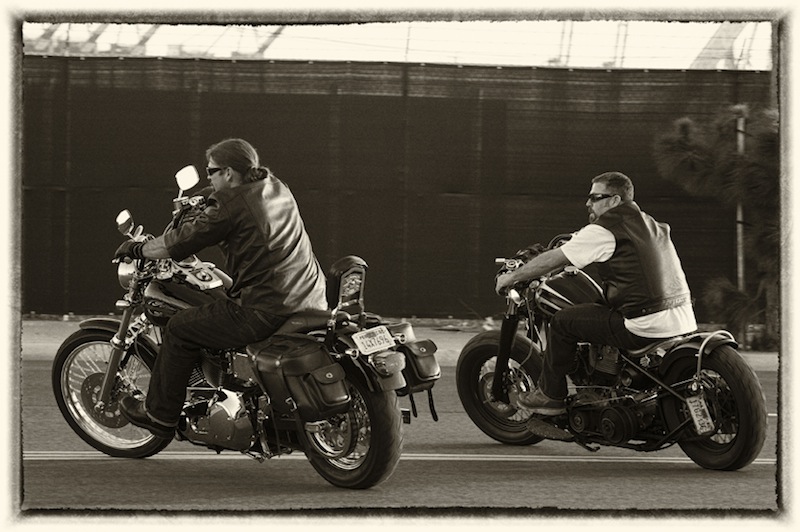
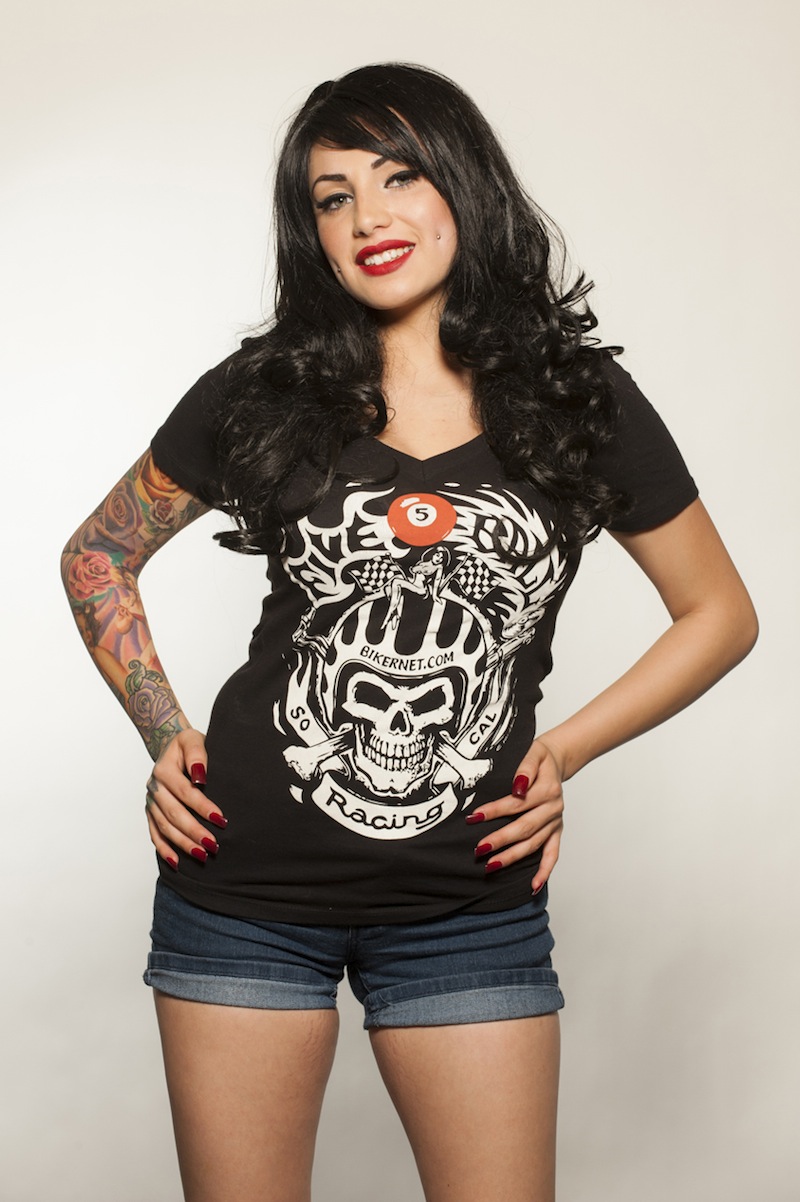
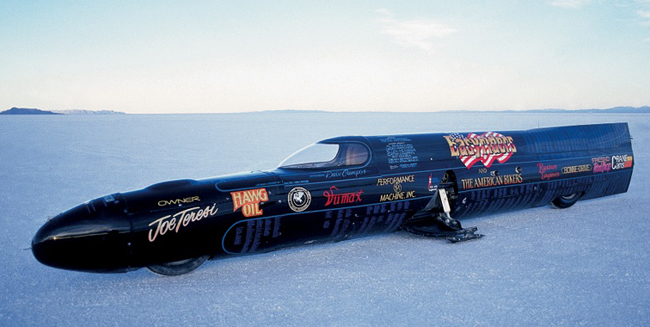

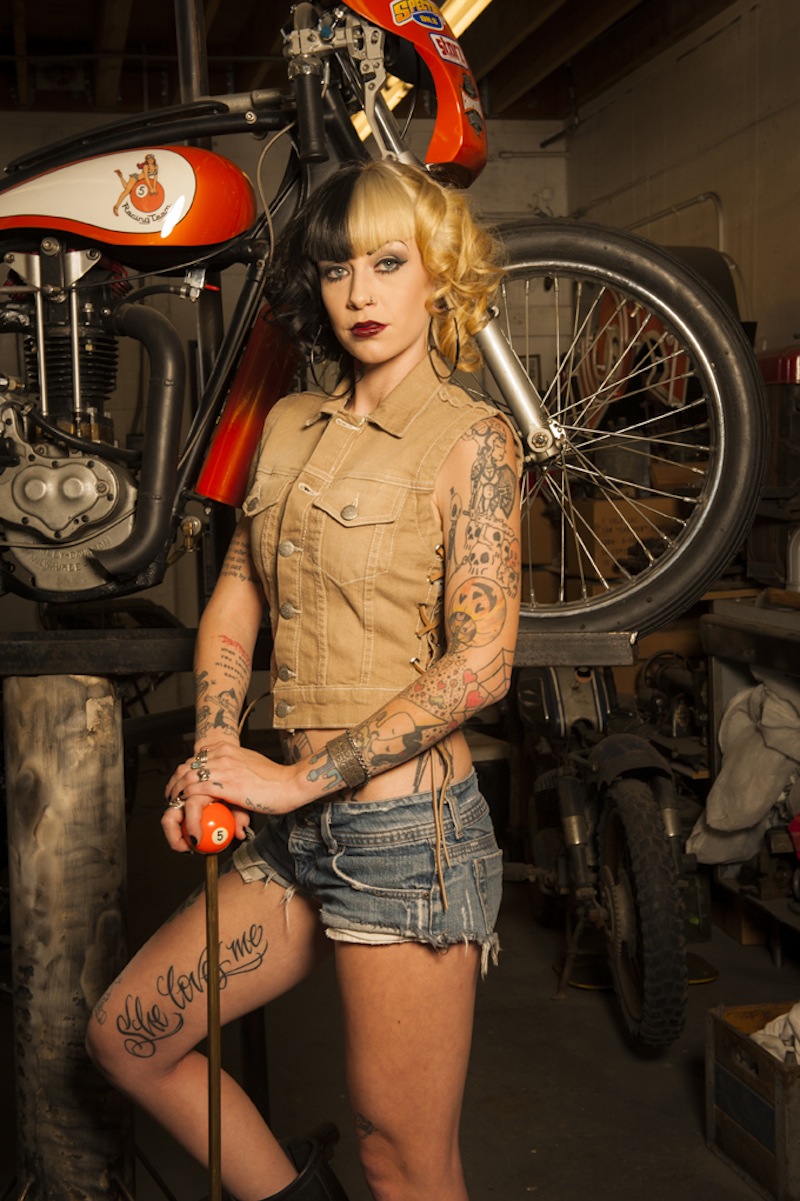

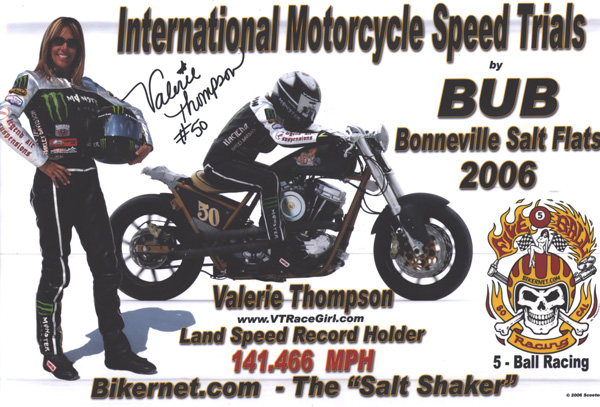
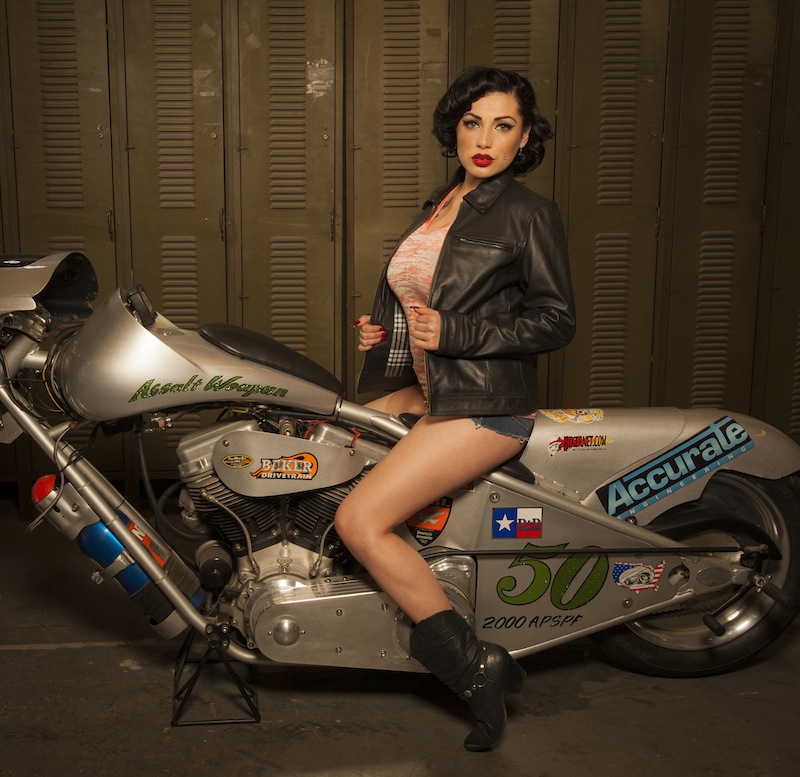
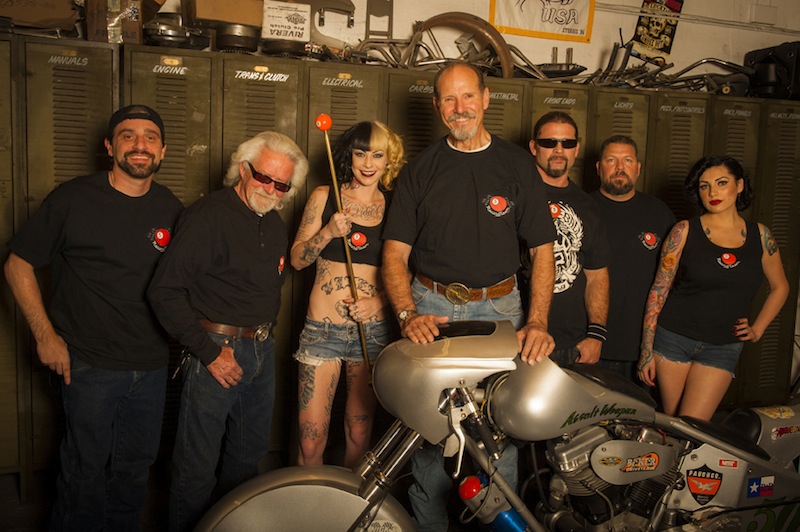

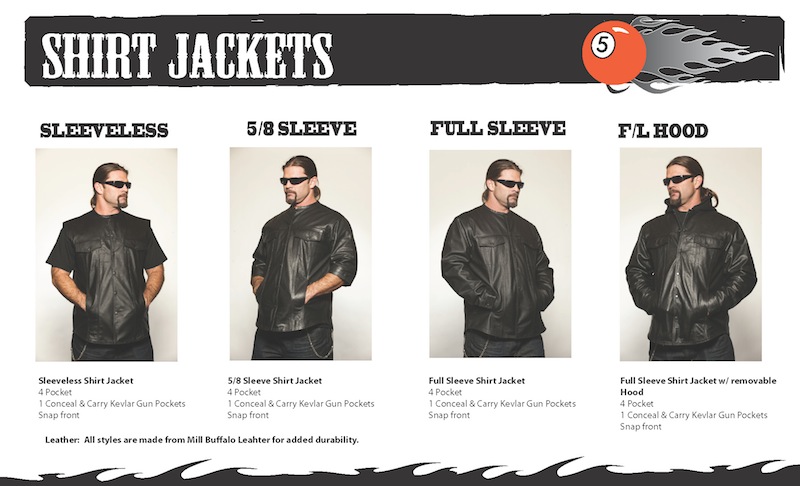
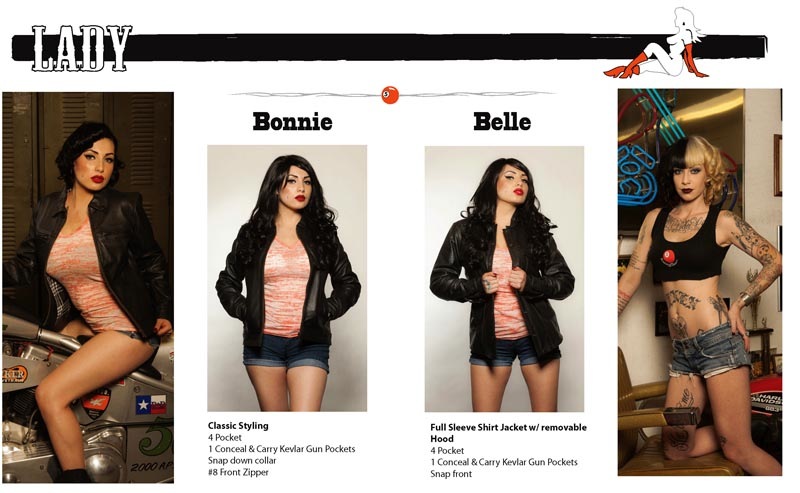
Arizona HOG Rally 2012 Rocks Williams, Arizona
By Joshua Placa |

The annual Arizona HOG Rally recently returned to the historic mountain settlement of Williams. The event moved around the state from year to year, but Williams is a HOG favorite, having returned to this northern Arizona town for a record tenth time.

Founded in 1881 as a trapping and logging camp, Williams is named after one of the town’s wooly settlers, mountain man Bill Williams. Riding by its handmade brick and clapboard buildings, it’s easy to get the feeling Norman Rockwell might be hanging around, leaning up against an oily Flathead, waiting for the next staged western shootout, admiring the period architecture, maybe planting his easel on the corner of Third and Main, more popularly known as Route 66.

Roughly 500 HOG members representing 13 Chapters statewide rode into this well-preserved piece of old west Americana to suckle on the tar teat of the Mother Road. According to a spokeswoman for the Williams Chamber of Commerce, “I think HOG likes our small town hospitality, and bikers are very welcome here. They also like being on Historic Route 66, the motorcycle-only designated parking throughout downtown, and, of course, all the great rides. We roll out the red carpet and they pretty much have the run of the town.”

When many motorcycle rallies across the nation are finding their host cities less and less hospitable, Williams is a home away from home. The town is helpful and authentic; there is a laid back and intimate feel that makes a biker feel at ease. There is this creeping greed elsewhere, where enthusiasts are too often treated like nothing more than commercial revenue and traffic ticket fodder. This old boomtown, population 3,200, about 3 ½ hours northwest of Phoenix and 30-minutes west of Flagstaff, appears to understand motorcycling is made of people.


Williams was the last town in America to submit to the interstate bypass. It stubbornly fought the highway, relenting only when the feds agreed to provide no less than three exits to the tiny town. Seems like there’s no better place to hold a biker rally than this rebel outpost. Harley’s classically styled motorcycles couldn’t be more at home, or in a better place to ride away from.

The Grand Canyon is less than an hour’s ride north of town. Within one- to two-hour rides from Williams, which is flanked by the biggest ponderosa pine forest in the nation, is the perky college town of Flagstaff, spectacular Oak Creek Canyon, the red rock wonderlands of Sedona, and the old copper boomtown of Jerome. Further northeast is Monument Valley and the great Navajo Nation, the country’s largest Native American reservation. The haunting Petrified Forest and parts of the vast Painted Desert can be reached in less than three hours. If Williams has the will and facility, it has the makings to become another Sturgis.

At an elevation of 6,800, June in this mountain town offers almost ideal biker conditions. Temps were in the 80s with low humidity and a soft breeze that sometimes picked up to a bluster. The event celebrated Arizona’s centennial by giving away free bags of commemorative swag during the bike games. There was also a free poker walk, guided and self-guided tours, a poker run, bike show, street dance, and a stirring bike parade that could bring a tear to the most grizzled eye. Wild Bill Hickok himself would have felt right at home here, thrown down his bedroll, played a little faro, and maybe sought a more charmed end.









Bobcats, Bikers and Bears…
Oh my. There is an unexpected, 158-acre wildlife park just east of downtown Williams. Bikers are heartily welcomed, and if you go they may even make you an exhibit. Bearizona is a drive-through wild animal preserve, featuring not only black bears but arctic and tundra wolves, American bison, white buffalo, burros, bighorn sheep, mountain goats and Dall sheep.
Motorcycles are dissuaded from the wild animal drive-through portion since the inhabitants have a strictly controlled diet and don’t digest leather very well. A courtesy car and GPS audio tour is provided free of charge. The drive takes about 30 minutes, although there is no time limit.

The road leads to a posse of black bears of various cuddly sizes and ages, although we’re often reminded to not hug the fluffy, man-eating wildlife. Fort Bearizona looms as the road exits through a large, gaping gate, leaving us to wonder what, exactly, is keeping the bears from the nearby concession stands.

Inside the wide-open Fort Bearisona, large pens contain bobcat, lynx, raccoon, porcupines, a barn animal area, and other forest creatures indigenous to North America, including the star of the show, cute little baby bears. A Birds of Prey show is presented at 11, 1 and 3 p.m. daily and is a treat.


Bearizona is open everyday from 8:00 a.m.; last vehicle admitted at 6:00 p.m. Closing hours vary with season and weather. Adults cost $20; seniors 62 and older, $18. For more information, call 928-635-2289; visit www.bearizona.com.
The Arizona HOG Rally will be reconvene in Yuma next October 24-26. For more information, contact Nick Feldaverd, Rally Coordinator, email nfeld@cox.net; call 602.206.1940; www.azstatehogrally.com.

For more on Williams, AZ visit www.experiencewilliams.com.


The Sheridan House Bed & Breakfast
460 East Sheridan Ave.
Williams, AZ 86046
928-635-8991
www.sheridanhouseinn.com
I find when it comes to B&B’s, what they are not is as important as what they are. The Sheridan House Inn is not rife with Grandma’s fussy doilies and bric-a-brac. It strikes a balance between an inviting, come-and-have-fun vibe and serene environs snuggled in between the cool, towering pines. The suites offer a tidy, restful, minimalist décor. The luxury touches leaves one feeling pampered—unparalleled coziness of their pillows, and Elemis bath and body products that put their dewy kisses upon road and wind-weary tresses and parched skin.

Motorcyclists Claire and Nick Kirby are the vivacious proprietors. They seem to have been born to the task of cultivating an inn, but we were surprised to learn they’re new to the gig. The affable Kirbys hail from the U.K. and lucky for Williams, a post-9/11 officious bureaucracy didn’t thwart the pioneering spirit that landed them on the frontiers of northern Arizona. Their once run-down property is now resplendent in extensive renovations, artful taste, and fresh zeal under their ownership. The Brit visionaries have innovative ideas to further develop the grounds, and offer special packages to man and biker alike.

We arrived to what I can only describe as the “happiest” of happy hours, delightfully hosted by the Kirbys each Friday and Saturday. We saw a passel of buffed Harleys in the driveway, and knew it was time to put the keys away. With a toast to the Grand Canyon Brewing Co., our host’s delicious homemade chorizo nuggets, and the attending fellow riders, we pronounced Sheridan House our new hideout.

Breakfast on the patio is a selection of sweet and savory offerings made on premises. Their handmade, secret recipe Lincolnshire Sausages, a Lemon Chiffon confection, Sweetened Mascarpone Cheese with Fresh Berries and the regional Huevos Rancheros were outstanding.

Sheridan House puts you up into the quieter residential area, but just a quick ride down the hill into downtown and all the rally action. See their website and Facebook page for more details.

Considering the cut of our Baby Boomer relaxed jeans, it’s easy to see we have husky appetites. Here are a couple of places that won’t disappoint:
World Famous Rod’s Steakhouse
301 East Route 66
Williams, AZ 86046
928-635-2671
www.rods-steakhouse.com

Rod’s Steakhouse is an icon, a surviving monument to Historic Route 66. The blazing Hereford cow sign is a beacon to the lost and hungry.
As you dip another shrimp in cocktail sauce, take in all the country kitsch—dishware accented by the sturdy bovine, paper cow cookie-cutter logo menu, and tell-all placemat detailing the rich history of the eatery. For the duration of the rally and maybe beyond, staffers dress in H-D regalia. No surprise the owners have been HOG affiliated for more than 20 years.

The present owners are Lawrence and Stella Sanchez. The missus has a warm smile for the customers and puts her love into the house specialties, such as Pasole, a nurturing elixir of exquisitely spiced pork and hominy soup. Her husband rose through the ranks in true American dream fashion, from dishwasher, busboy, manager, head chef, then new proprietor. A Sanchez is always on property to accommodate the needs of their guests.
The concise menu is heavy on the beef offerings with chicken, fish, and shrimp options. Appetizers and sides round out the menu, and the Cherry Pie makes for a nice finish. Their steaks are best-cut top sirloin, and their mesquite broiler imparts a really nice flavor. Cut options will fit the daintiest to manliest appetites. We enjoyed the thick and juicy Filet Mignon ($27) and the Ladies Lite Cut Prime Rib Au Jus ($21). Entrees come with Soup or Salad, Baked Potato, Fries, or Green Beans, and Rolls w/ Butter. The meat was fork tender and beautifully cooked to order.

See their website for photos, souvenirs, detailed history, cuisine offerings, and more.



Grand Canyon Brewing Co. & Cruisers Café 66
233 West Route 66
Williams, AZ 86046
928-635-2168 (Brewery)
928-635-2445 (Café)
www.grandcanyonbrewery.com
www.cruisers66.com
Brew crafters aspire to achieve beer’s ideal “taste and balance.” Strangely enough, those two qualities are lost on heavily imbibing consumers, who then not only ruin a beautiful brew, but maybe their future if they get back on their bikes. Beer is a terrible thing to waste, especially if it’s from Grand Canyon Brewing.

The beer menu changes with the availability of harvest time ingredients, but often there are pilsners, pale ales, wheats, stouts and seasonal brews in the rotation. Beer aficionados are watching this tasty microbrewery with great interest, and expansion appears on tap. A Grand Canyon beer may be coming to a bar or restaurant near you.


Attached to the brewery is 1950s’ theme Cruisers Café 66, hard to miss from the street with its elevated hotrod, Marlon Brando mural, and beer girls barely in bikinis. The restaurant has an outdoor patio and stage, and seems to be the hub for rally revelers. The girls pop tops while musicians rock and wail. This is an ideal spot to people watch, dance, and enjoy the American café-style cuisine. Portions are ample and provide that Mother Road burger, barbecue chicken, and old-fashioned, strangely satisfying Chicken Fried Steak goodness.

A full cocktail bar, four HD flat screens, gift shop, and nostalgia decor comprise this venue. The fruits of the on-property brewery are on draft.

Powerflo II Up-Sweep Pipes from Samson
By Bandit |

|
||
Scooter Tramp Scotty Escapes the Winter to the Keys
By Scooter Tramp Scotty |

Author’s note:
This event took place sometime in the mid, or maybe late, ’90s I think. To date (2009) I still maintain no permanent address and have stayed nowhere longer than two months.
The motorcycle rally in Daytona, Florida had been a good time but it was over now. It was still early March which, as anyone knows, is much too early a season for riding a bike into the north. The money in my pocket was running dangerously low ($230) and my high mileage FLT (full dress Harley Davidson) had a multitude of mechanical problems in need of attention very soon. Knowing almost no one in the Sunshine State I decided to just enjoy a slow ride south and see what happened next.
If one visits either coast of Florida he will find himself mostly immersed in city traffic. The center of the state, however, offers an abundance of small towns and lush backcountry roads. The choice was obvious. In Florida, pine and palm trees often grow side by side in the thick forests that lined the small secondary highways I chose.
The winter had been long and cold for a man who lives outside and travels by motorcycle, and as the air grew warmer with each days ride south, so did my excitement and anticipation of the coming spring-time travels.
Eventually I arrived in alligator alley (many ’gators) and the seemingly endless swamplands of the southern Florida Everglades. Besides overpriced Airboat swamp tour rides, a modest roadside town offered a small gas station. There, a man told of a free campground located on the shore of a little ’gator filled lake only a mile from where we stood. I decided to check it out.

The dirt road that led to this isolated lake circled its sandy shores before turning back on itself. The friendly camp-host who greeted my arrival said to pick any spot, enjoy myself, and stop by his camper for coffee in the morning if I liked. I thanked him kindly then fired up the old Harley to circle the lake in search of a good camp-spot. Besides a few alligators, the campground was home to only a handful of RV and tent campers.
On the first pass I was stopped at a very large, primitive, and yet somehow elaborate camp to become quickly acquainted with a big family of hillbillies who told me (and I believed them) they were from the back woods of Arkansas. They numbered seven strong, and all agreed that I would have to stay as their honored guest.

Thirty-something was the approximate age of the oldest son—the obvious leader—and his word seemed as law among the rest of the family. Everything about this guy reminded me of Brad Pitt’s character as a trailer-trash psycho-killer in the movie “Kalifornia”. Nevertheless, they all treated me as family and cooked up a big dinner of steaks and freshly caught trout over their open fire in celebration of my visit. A strange sort of fame to be sure; but undeniably fun as well. I put up a tent against the mosquitoes that night and slept on the bank of the little ‘gator filled lake.
Next morning psycho boy took his mini truck and headed into town for supplies. The family remained behind. His wife was a woman crippled by a rare condition that promotes severe curvature of the spine. Although her mind was clear (well, sort of), her body was a torturous thing of obvious pain and disfigurement.
Before long she and Brad’s mom handed me their camera and asked if I’d take a few pictures of them perched on my bike. When the amateur photo shoot was over, I bent down to help the sweet natured, handicapped woman from the motorcycle seat. Just when I had her lifted a foot in the air the family mutt decided to move on this opportunity. So there I stood bent over my bike with a cripple in my arms and a dog latched onto my ass screaming like a woman in labor! Too bad no one got a picture of that.
When Brad returned, and with the promise of some great pictures, he asked me to move my bike to the waters edge. I did. He then produced a fishing pole and started casting a lead sinker at the noggin of an innocent alligator who was minding his own business way out in the lake. Once Brad had pissed the big lizard off sufficiently, he reeled the line in as the toothy beast followed his lour to the bank beside my bike. When the ’gator arrived, psycho boy began beating him with the pole while yelling, “Shoot the picture now!”
His mother’s voice quivered with obvious fear as she begged him to stop or at least be careful.
“Oh Maw,” Brad replied as the alligator snapped yet again at the pole he continued to beat it with, “it’s just an ol’ gator being a ’gator.”
Next morning my new friends cooked up a tasty breakfast for which they insisted I stay. But the little campground lay in the middle of nowhere and I was ready to move on. When the food was gone, I said goodbye then returned to the little highway and my slow ride across alligator alley.

The landmass of southern Florida rests atop a bed of ancient coral. This prehistoric coral bed extends beneath the oceans surface for many miles beyond the southern most coastline. The result is a chain of small coral based islands known as the Florida Keys. They extend beyond the southern shores of the mainland and are surrounded by a sea of exceptionally shallow water. It’s these shallow waters enabling 130 some-odd miles of bridges connecting this string of islands to be built.

Eventually I pulled onto Highway-1, which led south across these magnificent concrete structures. The mid-March air temperature was in the middle 80s, as I cast my gaze to the changing scenery all around. Aside from the shops and houses, the islands were made up mostly of thick forests under a clear blue sky. But the water…
Sweat ran from my brow as a carefree breeze blew me from island to island. To my left was the Atlantic and to the right the Gulf of Mexico. The seafloor lay just below the surface of the very shallow salt water contained a dark, military green vegetation. Still other areas were a white color where the bottom was only finely ground sand. From high atop the bridges, the water below just looked like a huge patchwork quilt that continued on forever. Smaller islands could be seen on both sides with an occasional boat thrown in, to break the monotony. With very few cares in the world to interrupt this experience, I rode on.

Hwy-1 ended at the exceptionally crowded island of Key West (90 nautical-miles from Cuba), and it was just after sunset as I entered the Tourist Info Center to pick up a free map and ask directions to the action. The sweet young receptionist sent me to Duval Street. This narrow street starts at the Gulf of Mexico and runs all the way to the Atlantic Ocean (about 2 miles). I was soon to learned their huge tourist trade is the mainstay of the Key West economy. Duval Street (lined with restaurants and dinner places, tittie bars and extravagant nightclubs offered live bands and dancing every night, coffee houses, and an array of T-shirt and other souvenir shops) is a major south Atlantic party zone/tourist trap.
The crowd was thick and live music poured into the street as I backed the FLT against the Duval Street curb and leaned her onto the kickstand. Before long a big guy pulled an old Superglide into the parking space beside mine and quickly struck up a conversation. Doc stated that he owned THE PIRATE’S DEN; the island’s only biker friendly tittie-bar. He invited me to stop by later for a complimentary lap dance. With a promise to show, I thanked him kindly before he rode off.

Not ten minutes later four drunken tourist chicks materialized from the Duval Street crowd to snatch me from the parked FLT’s pilot seat. After an hour of dancing they invited me for a dip in the Jacuzzi that bubbled among the thick foliage of tropical plants in the beautifully landscaped, yet very private, pool area of their luxury hotel.
It was late when I arrived at The Pirates Den. As closing time approached, Doc offered use of the bar’s side yard to make camp in if I liked. I did.
The first order of business on that sunny, tropical-island morning in Doc’s yard was food. After locating an inexpensive breakfast, I decided it wise to search out a more permanent home.
The small island of Key West was much too crowded for a traveling vagabond to successfully hide his camp. Obviously, the solution could only be found on one of the other islands. Boca Chica Key was two islands north and still only six miles from downtown Duval Street. With exception of a large military base, the land was mostly vacant. Shooting into the woods just off Hwy 1, a well hidden walking (or riding in my case) trail led to a beautiful clearing only a short distance in. The place was completely surrounded by pine, mangrove, palm, and other tropical trees. Perfect!

In the swamp 30-feet from my camp an old refrigerator lay on its back rusting. On the fourth day, I began to use the hollow compartment inside as a closet. The Key West locals just smile at the constant parade of “Tourons”, as some like to call them, and politely take their money. The great piles of gear bungee-corded to my bike had made it clear to everyone that I was a tourist. Time and again, the locals had greeted me with scant interest or even contempt. It’s just the way the island people are. The newfound ability to stash my gear at home helped to change their attitude toward me almost immediately.
After some negotiations I worked out a window cleaning trade with a local health club owner. That deal granted complete access to their facilities including weight room and hot showers.
The island was mine now. I could stay as long as I liked.
I began to settle in. Being a stranger in a strange land, I’d come to this place alone and the constant festivity of Duval Street attracted me like a moth to flame.

It was a lazy afternoon as I sat drinking Java on the front porch of one Duval Street coffee shop. In casual conversation I mentioned my background as roofing contractor in a former life. A big family man named Scott (easy to remember) quickly told of a very bad leak that had been watering his bedroom for years. He said that no roofer (he’d hired many) had been able to fix it.
The next day I checked his leak then said, “It’s no problem Scott. I want $250 labor, plus materials which we haul over here in your car.”
“You got it,” he replied.
The job took only three hours and the garden hose test proved that the problem had been corrected. We were both happy guys.
Four days later my clutch cable broke. After calling around I ended up at ADVENTURE SCOOTER—a motorcycle and mostly scooter repair shop.

Many who live on tropical islands these days drive only scooters or even bicycles and Key West was no exception to this rule. The island is 2 x 4 miles across and there’s no road capable of allowing speeds in excess of 35mph here. The weather is almost always good. Roads are small and these mini bikes are compact, maneuverable, and squeeze easily through the sometimes heavy traffic. The tiny roads were littered with them.
Adventure Scooter was one of the local companies that rented these mini, munchkin machines to tourists. However, their repair shop was separate from the rental department, and the boys there were well equipped to handle motorcycles too. The manager was a Harley rider named John. There’s an unwritten law adhered to by all old-school bikers that insists one never leave another—even a perfect stranger—broken down alongside the road unless extenuating circumstances take unavoidable precedence. For many, this law is etched in blood upon the very walls of their hearts. John was no exception. Seeing my need he got the parts then agreed to let me wrench on my old battle-wagon in his shop.
When the dust finally settled, I handed him the cash, shook his hand and said, “I need a job John. You need a wrench?”
He looked me over thoughtfully for only a moment then said, “You might be in luck. I just lost a man last week. Seems like you know your way around machines well enough… Tell you what; be here Monday, 8 a.m. sharp. See you then.” It was Wednesday.

It’ll never cease to amaze me the way the road will take care of a man if he is willing. He need only walk through his fears of destitution (easier said than done), be prepared to exchange some of his pampers (luxuries) for real-life adventure, trust the Highway God unquestioningly, remain honest, and do his best.
There was nothing left to do but enjoy island life and wait.
Key West is a tough place to make a living and for insult-to-injury housing prices are astronomical as well (not much land). It’s for this reason that many of the locals live on boats. To moor a boat offshore costs nothing. Cast your gaze across the emerald green waters that gently pelt the sandy shoreline and you’ll see a small city of boats anchored there. Some are beautiful while others are rough; some are sinking or sunk in the chest deep water, and many are no more than pontoons with a wooden box built atop them that serves as house. If one’s not in the mood to row his dinghy to shore, there’s a water taxi that’ll take him to and from his ocean estate for a small fee. Many of the friends I made on the island were boat dwellers.
I settled in some more.
Scooters are simple mechanisms and I took to fixing the micro machines like fish to water. After the first week John gave me a raise.

The lead mechanic was a tall guy from North Carolina. Steve’s accent had never truly left and he remained a constant reminder that I was a very long way from where I’d begun. We took a fast liking to one another and on most weekends went bombing around town on scooters together. In the evenings we’d just hang out wherever or sometimes help to close the Duval Street bars.
Part of Steve’s job as lead mechanic was to maintain the Sea Doos for a local water-toy, rental company. On occasion we’d head for the dock, grab a couple of King Neptune’s crotch rockets and head for the open sea. Being the mechanics for these elaborate toys, we rode for free. For me this was a new experience. After getting over the apprehension of the first ride, I soon found that the overpowered mini-craft act more like a dirt bike than a boat. In this light, it took about ten minutes practice before I was bouncing across the tops of the large swells at a conservative full throttle with Steve in the background yelling, “Slow down you ungrateful fuck!”

Sometimes I’d stop and look across the emerald sea of huge rolling swells to the island shore beyond. There I could see the clowns, jugglers, acrobats, food vendors, and other assorted circus acts performed by a variety of freelance entertainers. Most of them come from the north to spend the winter entertaining the great crowds of tourists that gather on the shore in anticipation of the show at sunset.
Jeff worked in the Adventure Scooter rental department. He and best buddy Peter where hardcore sailors. They spent many hours on the water either racing or just enjoying the wind in their sails and I was always invited. The shallow sea seemed to go on forever as we’d cruise round the islands. Many times I saw dolphins’ jumping the ocean swells in their eternal search for food.

Every man has his own reality. You know his job, woman, friends, family, and home. The things he loves and things he only tolerates in his world. In this way a man’s life is forged of the people and objects around him. One of the strangest facets of a drifter’s life is that he has almost no permanent reality of his own. In my case the only things that remain familiar are my bike and body. Everything around these two staples is in a state of almost constant change. Life had become a perpetual visit into other people’s worlds. Looking across the bow of Jeff’s reality to the brilliant colors of the setting sun beyond, I wondered at the beauty of his world. What an interesting life.

My bike still needed work. After four weeks of collecting regular paychecks the parts John had ordered for me at a considerable discount finally showed up. I promptly put my FLT on the lift then quit my job. For the following week I came in everyday to wrench on my own bike. In the meantime, John lent me a scooter to get around on. At week’s end my Electra Glide was roadworthy again, and by Monday I’d been rehired back to spinning wrenches on mini-bikes.
It was 2 a.m. at my home in the Boca Chica mangrove jungle when I came awake to the blinding glare of a high output flashlight centered on the door of my tent. Then, in a tone commanding great authority, a voice boomed, “Island police. Step outside please.”
After unzipping the door I squinted into the blinding beam. A glance beyond the cop to the highway in the distance revealed the moonlit image of five patrol cars. Must’ve been 15 cops surrounding my little home. Looking flashlight man in the eye I said, “All this for little old me?”

It’s always the same with these guys. Being unsure if they’ve stumbled across an armed convict or something, they always start with a bad attitude. Then, after realizing my paperwork’s clean, I ain’t drunk or belligerent and in general am a sorta nice guy, they invariably mellow out. More often than not they just say goodnight and split. After all, sleeping alongside the road is not a felony. Generally, it isn’t even a big deal. In the case of these boys though, my camp was too close to their military base. I had ’a go.
As I slowly broke camp a few cops stood around holding flashlights on me and asking questions. Once they learned of my slightly eccentricity lifestyle the men got real curious. Then, at their insistent prodding, I told a few stories (not unlike the one I’m telling now) while sleepily rolling up camp. When finished, they compared me to an old Key West resident named Ernest Hemmingway. Very flattering. In the end they called me friend, shook my hand, and then threw me the fuck out. Very strange.
I soon showed up on the porch of a doublewide trailer located on Stock Island just one mile to the south. A well built and dark haired, German girl opened the door and invited me inside. We’d been friends for over a month and had spent some time cruising the islands aboard my bike and talking. In a heavy accent Coral had told me that Germany is no place for a sun worshipper like her. Said she’d known she was born in the wrong place even as a little girl. At the age of 20, Carol had left Germany and had lived in many parts of the world since—always traveling alone. She spoke four languages fluently and was only 36 years old. I found her fascinating. But love had presented itself here on the islands, and along with it, Carol decided on a few college courses as well. She’d been settled here for over two years now. But graduation had come and gone some time ago, and the man had been in prison (I never asked) for almost as long. Carol was kind of in limbo.

Recently she’d offered me the use of a spare room at her place if I’d cared to use it. I hadn’t…till now. The tiny room was hot and stuffy. In recent years freedom and the wide-open outdoors had become my almost constant companion, and by now a room often felt as only a box. Four sides and a lid. Suffocating. I made camp in the yard.
Next day I became acquainted with my new housemate. Kelly was an old fisherman with failing health whom Carol allowed to stay free and seemed to care for very much. For the better part of a lifetime the old man had worked aboard the many old and beat up commercial fishing boats that line the Stock Island harbor. I was told the job is hard and that drug addiction runs ramped there. And although an undeniably nice fellow, of Kelly’s plight he talked little. And I did not ask.
In the two weeks that followed Carol and I spent much time together. Our constant babble of far off lands and the adventure that goes with them only added fuel to each other’s fires. Carol bought a one-way ticket to Cancun, Mexico then sold or gave away all her worldly possessions. She left the house to Kelly and me, stating that the rent was good for three weeks more and we could stay till they threw us out for all she cared.
It was mid May now and the southern air was growing hot. The Myrtle Beach Rally was scheduled to begin soon in South Carolina and I had planned to crash that party on my slow migration north. The Keys had been good to me but it was time to go.

After collecting my last paycheck from Adventure Scooter, I turned my back to the island and twisted the throttle.
–Scooter Tramp Scotty

